The official opening date of the Auschwitz camp is June 14, 1940, the day the first transport of 728 Polish political prisoners arrived from the prison in Tarnów.
The official opening date of the Auschwitz camp is June 14, 1940, the day the first transport of 728 Polish political prisoners arrived from the prison in Tarnów.
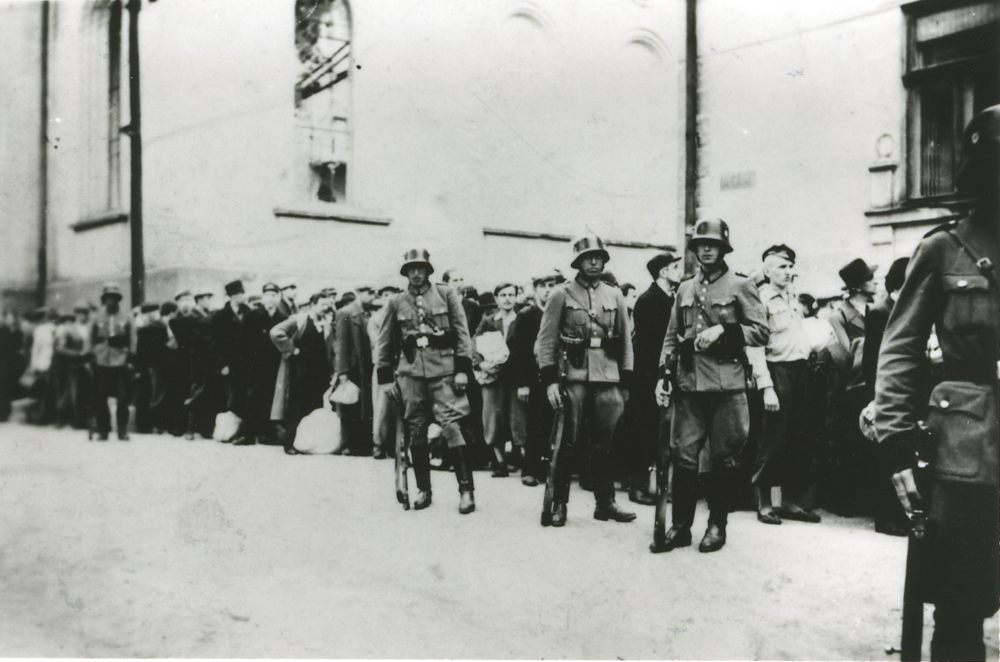
Source: A-BSMA
Prisoners from the first transport from Tarnów. Behind them are the walls the Tarnów synagogue.
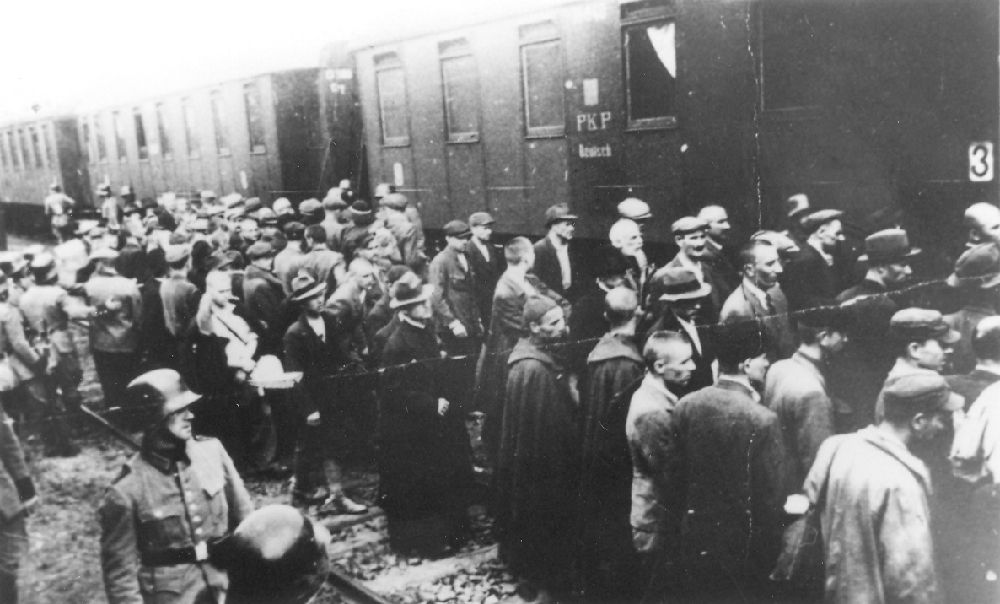
Source: A-BSMA
The railway station in Tarnów. The transfer of the first transport of prisoners to Auschwitz.
Most of them were high school and college students, and soldiers arrested during the autumn of 1939 and the winter and spring of 1940 in Slovakia and in various towns in southern Poland (near Zakopane, Nowy Targ, Nowy Sącz, Sanok, Baligród) while attempting to cross the Polish-Slovak border. The Germans called these prisoners “tourists” or “border men.”
Among the first prisoners were: Kazimierz Albin (No. 118) and his brother Mieczysław (No. 116), Jerzy Bielecki (No. 243), Henryk Kasia (No. 666) and his brother Zygmunt (No. 164), Tadeusz Pietrzykowski (No. 77), Aleksander Martyniec (No. 644), Alfred Przybylski (No. 471), and others. Along with the “tourists” others were also brought to Auschwitz, such as many members of organizations that smuggled volunteers for the Polish Army which was forming in Hungary. These individuals included mountain guides as well as numerous members of underground organizations: Union of Armed Struggle, formed in the autumn of 1939. This group included, Tadeusz Paolone (in the camp under the name Lisowski, No. 329) and Antoni Suchecki (No. 595), both were shot at the Wall of Death; also, members of the Sącz region White Eagle Organization. On June 14, 1940 imprisoned in Auschwitz, among others, were: an excellent athlete and Olympian Bronisław Czech (No. 349), many time Polish champion in ski competitions, who was arrested for his involvement in the resistance movement—died in the camp hospital; Józef Chramiec-Chramiosek (No. 101), representative of Poland in ski championships in the years 1932 to 1936, who was shot in the camp; painters: Jan Komski (used the last name Baraś while imprisoned in the camp, No. 564), and Jan Gąsior Machnowski (No. 724).
On June 14 a large group of young people arrived at Auschwitz (among them, the scouts) arrested in the spring of 1940 as part of an operation ordered by the governor Hans Frank, the extraordinary pacification action (Aussenordentliche Befriedungsaktion – AB) leveled against Polish intellectuals. Among them were: Stanisław Ryniak (No. 31), Mieczysław Ciepły (No. 35), who died in the camp; the Barański brothers: Stanisław (No. 132) and Emil (No. 377), both died in May 1945 in the sinking of the ship “Cap Arcona”; Edward Galiński (No. 531) – hanged in the camp after a failed escape with a female Jewish prisoner Mala Zimetbaum, who was also killed; Wiesław Kielar (No. 290), and Jerzy Bogusz (No. 61).
In this transport there were also people arrested during street roundups, among them were: Bronisław Cynkar (No. 183), Roman Grabowski (No. 59)—died in the camp, Kazimierz Misiewicz (No. 706), Wiktor Grochala (No. 738), Janusz Pogonowski (No. 253)—registered as Skrzetuski, hanged in the camp), and Kazimierz Waloch (No. 520), who died in the camp.
Excerpt from the prisoner logbook in Tarnów with the names of the prisoners deported to Auschwitz on June 14, 1940.
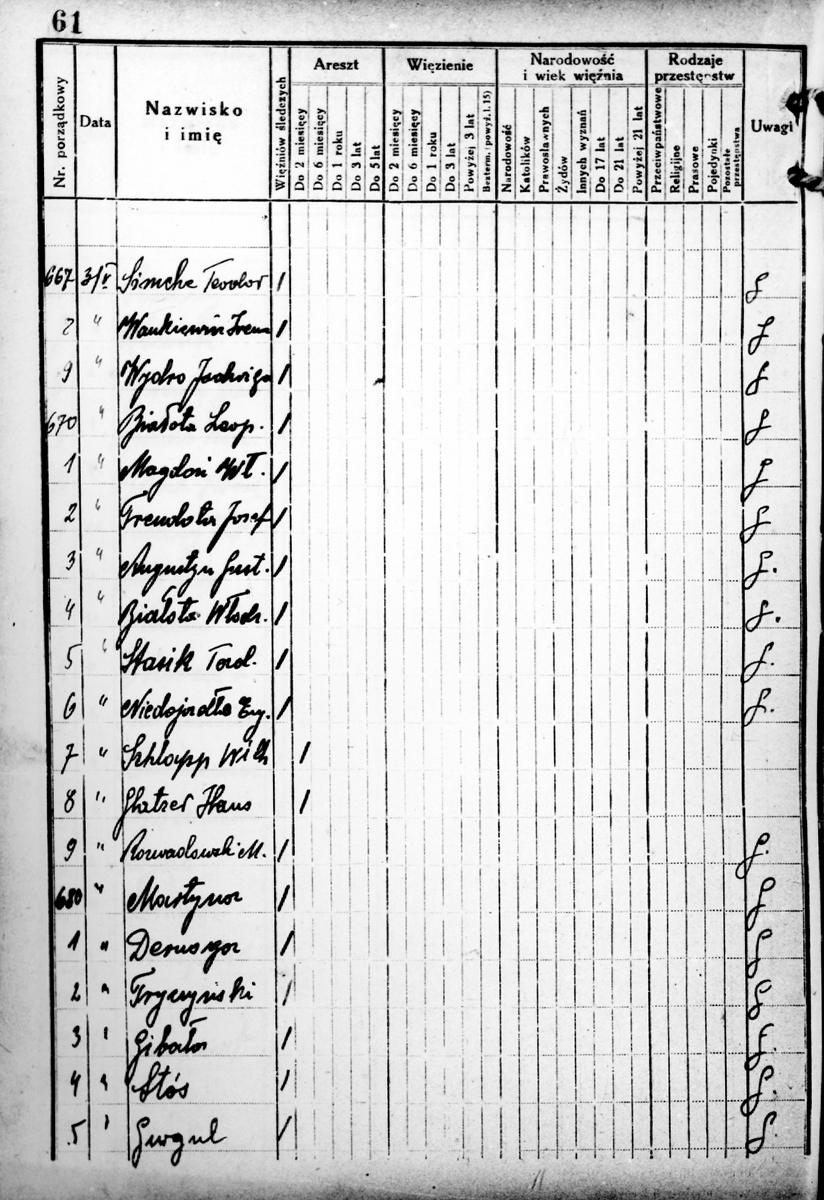
Source: A-BSMA
A large number of the prisoners in the first transport were high school and university students. Among the other older prisoners were people of different professions: teachers (Stanisław Mróz, No. 107, who died in the camp; Julian Wykus, No. 184, who died in Mauthausen); lawyers (Tadeusz Krupiński, No. 224; Julian Lachendro, No. 265; Stanisław Chmiel, No. 340—all died in the camp); priests (Władysław Wolko, No. 80; Stanisław Węgrzynowicz, No. 340—died in the camp); landowners (Józef Baltaziński, No. 749); sportsmen (e.g., Tadeusz Pietrzykowski—a Polish boxer, runner, and bantamweight champion in Warsaw); military (Jan Pin, No. 56, and Lucjan Kazimierczak, No. 444—both shot in the camp); physicians (Stefan Pizło, No. 333, who died in the camp; Edward Nowak, No. 447, who died in the Lublin-Majdanek camp); musicians (Czesław Sowul, No. 167—later a member of the camp orchestra); and craftsmen. At least 11 inmates were of Jewish origin. (Prior to the start of the mass extermination of Jews, they were directed to Auschwitz on the basis of existing regulations, using “provisional detention”).
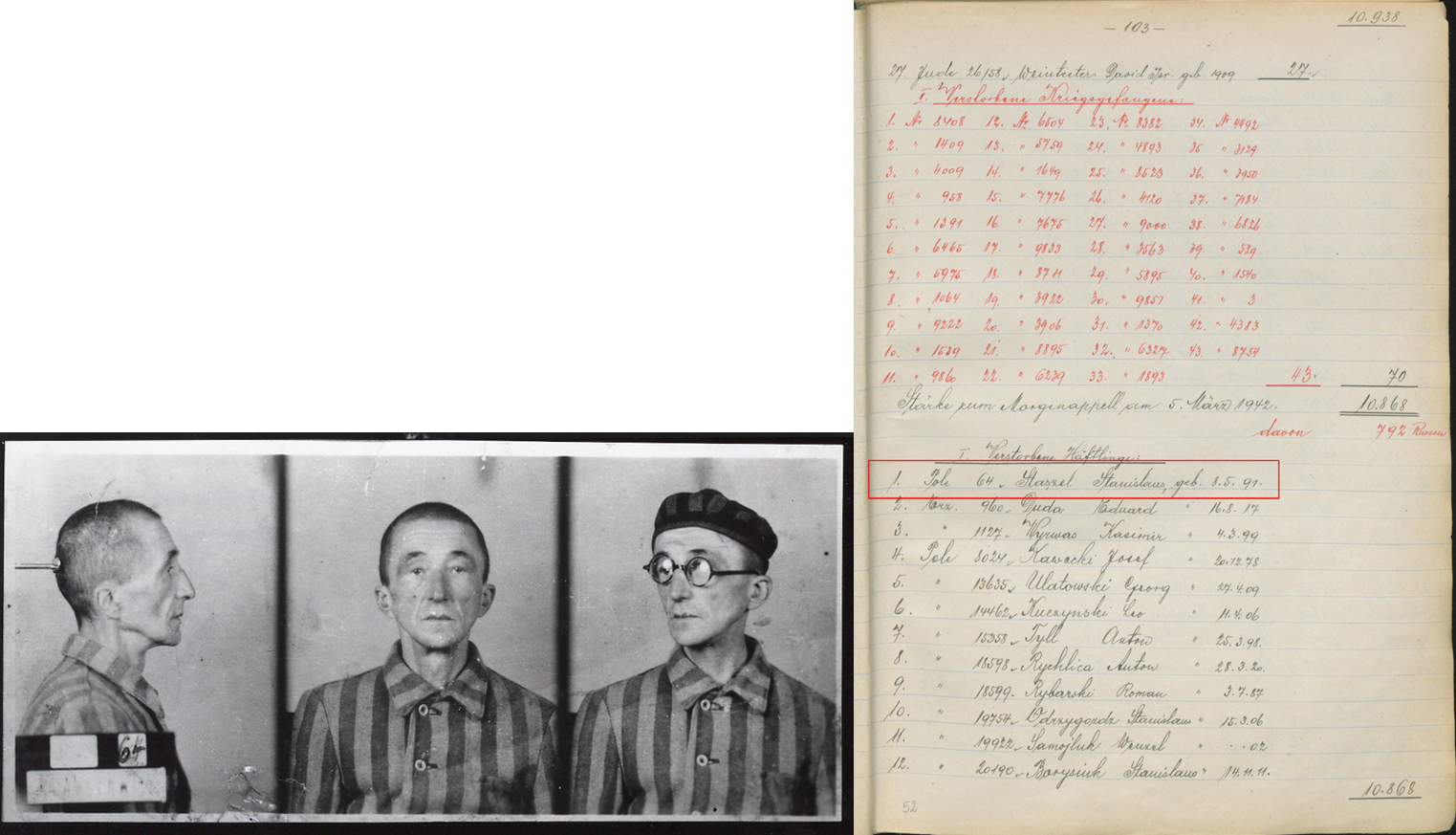
Source: A-BSMA
Stanisław Staszel, prisoner number 64, born May 8, 1891 in Nowy Targ, a civil servant. A page out of the Daily Prisoner Count Book (Stärkebücher), which states that he died on March 5, 1942.
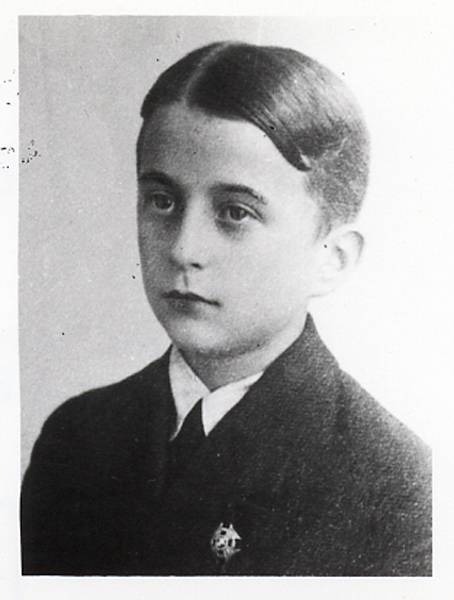
Source: A-BSMA
Mieczysław Popkiewicz, prisoner number 36, born in Cieszanów. At the age of 23 he died in the Bay of Lübeck.
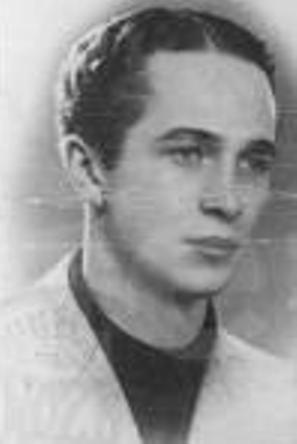
Source: A-BSMA
Tadeusz Pietrzykowski, prisoner number 77, born in Warsaw, boxer. Liberated in Bergen-Belsen on April 14, 1945.
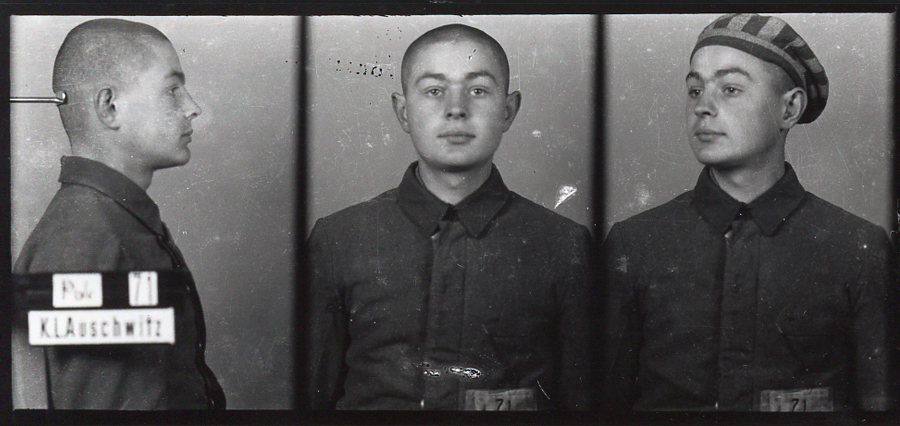
Source: A-BSMA
Zbigniew Matys, prisoner number 64, student. Died in the camp in 1941 at the age of 19.
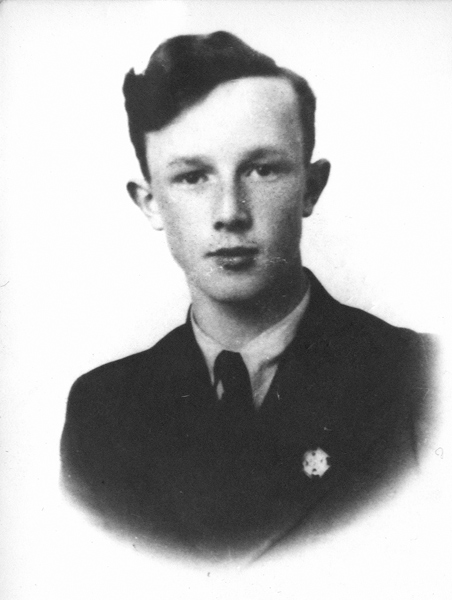
Source: A-BSMA
Kazimierz Albin, prisoner number 118, high school student. He was arrested along with his brother Mieczysław on the way to join the Polish Army which was being formed in France. He escaped from Auschwitz on February 27, 1943.

Source: A-BSMA
Letter sent from Auschwitz by Wiesław Kielar, prisoner number 290, to his father who lived in Jarosław. The author of the letter was liberated in Germany in April 1945.
Transcript of the letter:
Auschwitz Concentration Camp, August 11, 1940.
My dear parents, sisters and brothers!
From June 14, 1940 I have been in K.L. Auschwitz. I am doing very well and I'm healthy. What is dad up to? Where does he work now? Letters to me you can write in German. In the case of letters and money orders follow the directions provided on the envelope. In the camp we have a canteen where for German money we can buy everything. I am waiting to hear from you. What are my brothers and sisters doing? Warm greetings and kisses for the whole family, all my friends and colleagues. Your son and brother, Wiesław.
Translation: Łukasz Martyniak
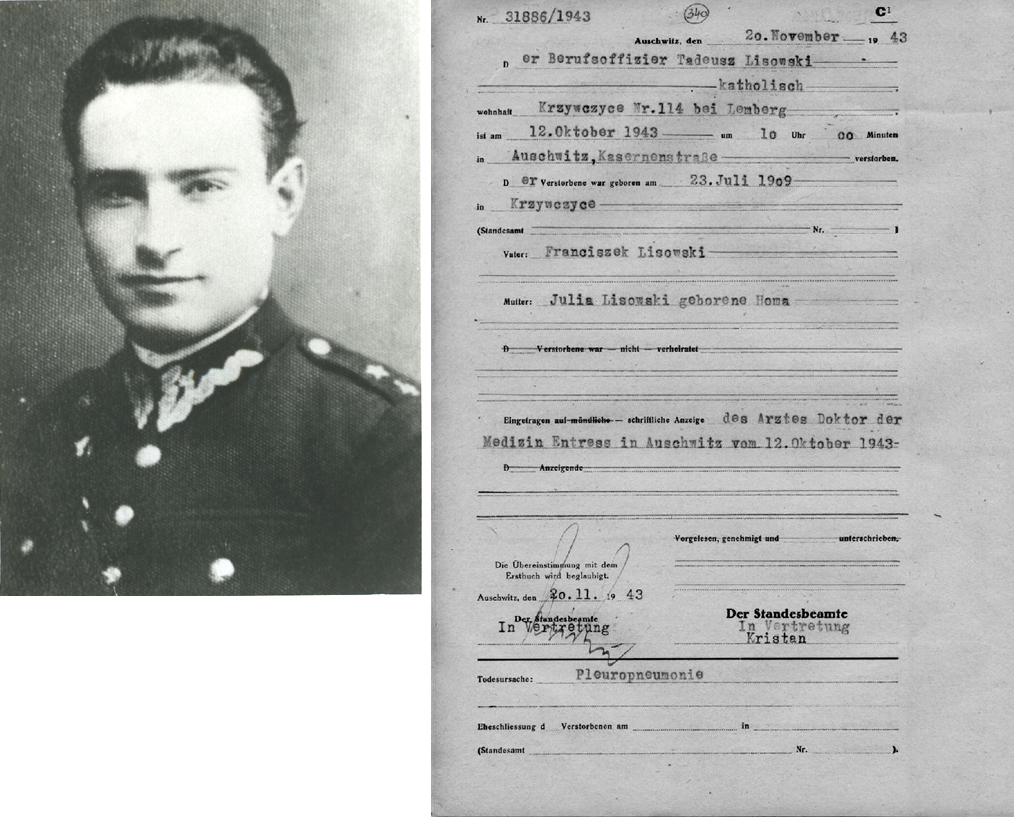
Source: A-BSMA
Death certificate and a photo of Capt. Tadeusz Paolone (Lisowski in the camp), prisoner number 329. As one of the leading commanders of the camp underground, he was shot at the Wall of Death on October 11, 1943. The document states a falsified date and cause of death (Pleuropneumonie - pleurisy and pneumonia).
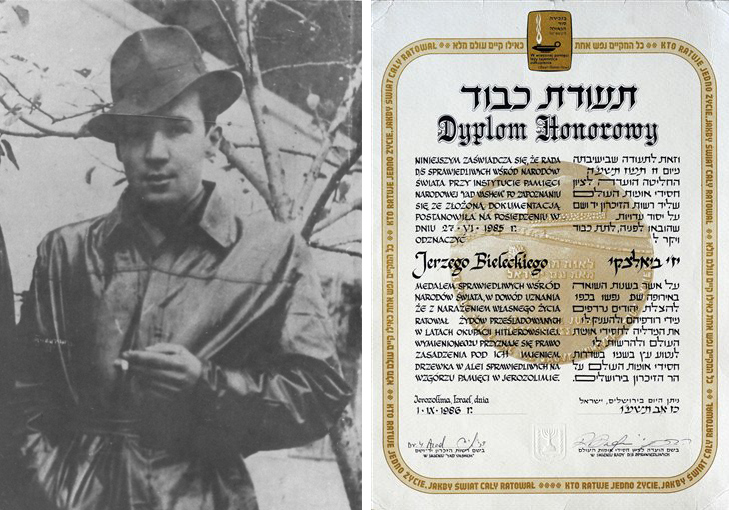
Source: A-BSMA
Jerzy Bielecki, prisoner number 243, a high school student. He escaped from the camp on July 21, 1944 with female Jewish prisoner, Cyla Cybulska (in the camp used the name Stawiska). After escaping, Cyla hid with a Polish family in the vicinity of Racławice, while Jerzy Bielecki fought in a partisan unit of the Home Army.
For helping Jews during the Nazi occupation, in 1985 Jerzy Bielecki was awarded the Medal of the Righteous Among the Nations by the Yad Vashem Institute of National Remembrance in Jerusalem.
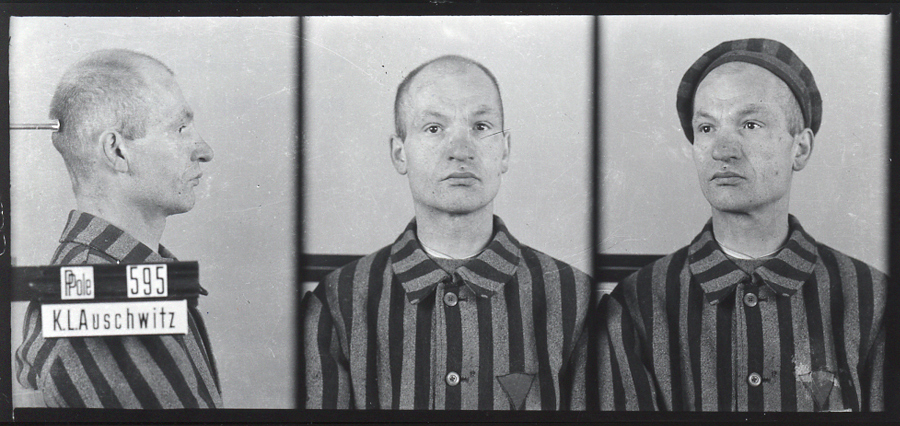
Source: A-BSMA
Antoni Suchecki, prisoner number 595, sculptor, one of the leaders of the Union of Armed Struggle in Zakopane, in the camp he was a member of the clandestine Union of Military Organization. Shot at the Wall of Death on June 25, 1942.
Fragment of a secret message by Antoni Suchecki:
My dear wife and children!
… I feel fine, I feel that my star is not fading yet, on the contrary, it shines even brighter, especially after such a long time, and for the same reason one wants to live so that I can still provide for you. In my conscience I feel such satisfaction that I accept everything without causing harm to anyone, and that I will be able to look anyone straight in the eye, that neither you my dear Wife, and neither you, my little children, will not be ashamed of your father’s deeds, unlike it will be with other men. … I do not know how long I’ll still be here, because a transport will leave at the end of the month, but maybe we are not going yet. It is possible that at Christmas we will be here too, since transports from here were stopped due to typhus. …
in a postscript:
… I will finish this confession for now, I send you heartfelt greetings and kisses from your husband, son, and brother, and I ask you not to worry and to keep your chin up so that nobody can see you heartbroken … because clear days will come again.
Goodbye
Antoni Suchecki
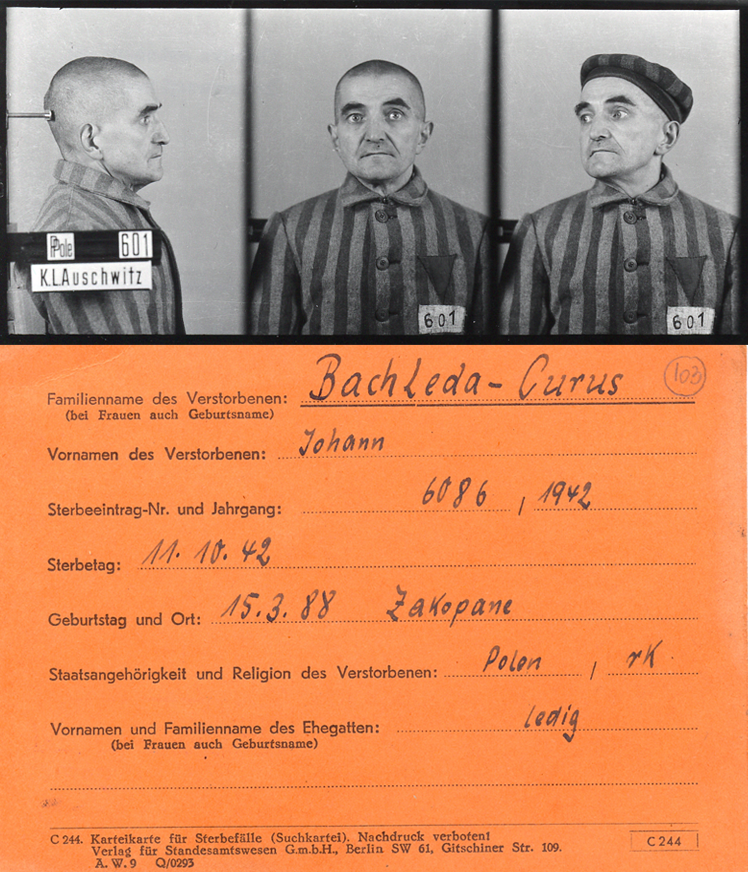
Source: A-BSMA
Jan Bachleda-Curuś, prisoner number 601, born March 15, 1888 in Zakopane; document confirming his death on October 11, 1942 at the Mauthausen camp.
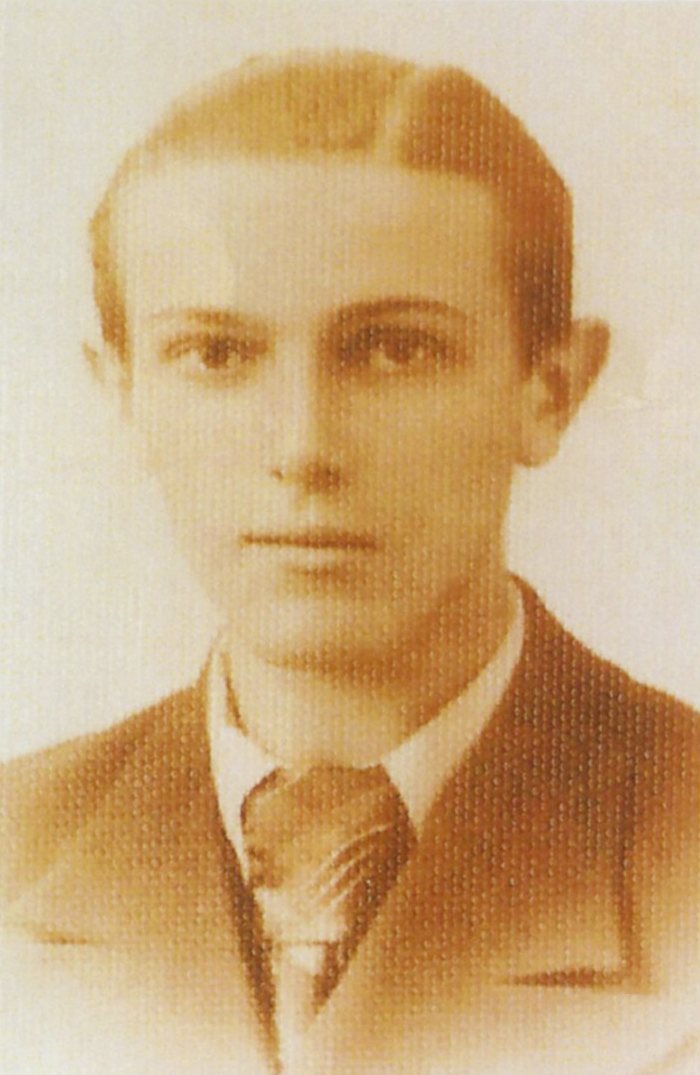
Źródło: Morlok Helmut, Ich lasse mein Leben nicht von Auschwitz beherrschen! Aus dem Leben und Werk des Architekten Alfred Przybylski 1919-1994, Oświęcim 2014.
Alfred Przybylski, prisoner number 471, born in Dąbrowa Górnicza, student. Transferred from Auschwitz to Gross-Rosen. Survived.
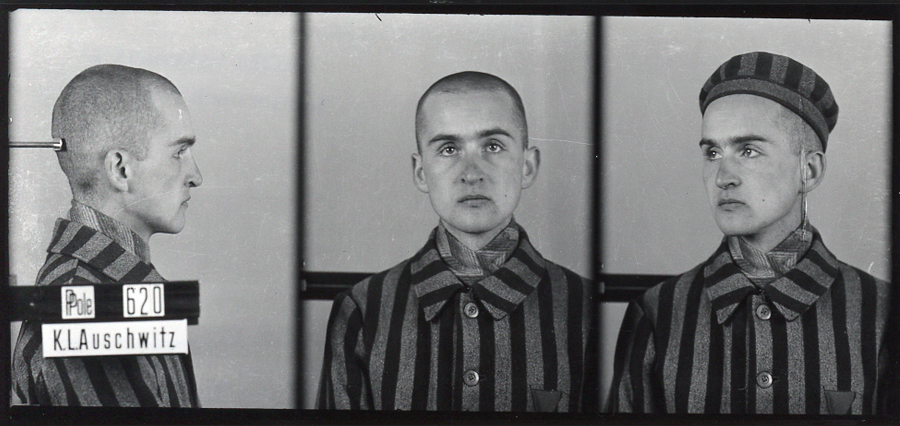
Source: A-BSMA
Stanisław Ohrt, prisoner number 620, a student. Killed in the gas chamber on September 9, 1942.

Source: A-BSMA
Stanisław Stankiewicz, prisoner number 675, student, killed in the camp at the age of 20. The letter from the Political Department (camp Gestapo) notifying Henryk Stankiewicz, residing in Posada Jaćmierska, of his responsibilities (such as paying the compulsory fee) regarding issuing an urn containing the ashes of his deceased son, Stanisław Stankiewicz, prisoner number 675. (In April 1941 the camp ended the practice of sending an urn with the ashes of the deceased prisoners to their loved ones).
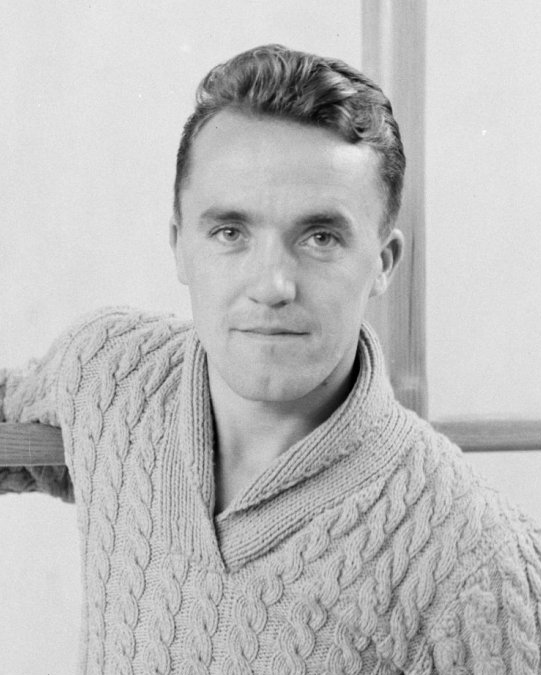
Source: CC BY-SA 3.0 nl
Bronisław Czech, prisoner number 349, an outstanding Polish skier, mountaineer and rescuer, sailor, trainer, coach, co-author of a book on skiing (Narciarska zaprawa biegowa i skokowa, 1934), Polish representative at the Olympic Games in 1928, 1932 and 1936. Died in the camp hospital at the age of 36.
Fragments of testimony by a former prisoner Tadeusz Niedzielski (prisoner number 423), who was arrested in Sanok, held in prisons in Sanok and Tarnów, and eventually deported to Auschwitz:
On the same day, meaning, June 14, 1940, at 12 the train pulled into the Oświęcim station and slowly made its way up from the station to the railroad siding leading toward several large buildings. … The building in front of which the train stopped was surrounded by a double fence with barbed wire that was 2 m tall, forming a square with sides of about 30 meters long. Behind the fence there were high guard towers built of planks and machine guns aimed toward the building. For each machine gun there were two SS men. In the same formations … they were densely scattered on both sides along the entire length of the train with machine guns, with the exception that the SS were in a lying position. Inside the fence, before entrance of the building there were more than a dozen men in striped uniforms and round caps on their heads. … We assumed that these were German sailors who were prisoners. … In the meantime, the SS and German police in green uniforms and began to force us from the wagons. At the same time, those “German sailors” began eagerly helping them by pushing and beating the prisoners on the head. They forced us behind barbed wire and placed in the ranks of ten, and then forming groups of a hundred, beating prisoners at random and with whatever they had - sticks, rifles, fists as well as terrifying us with attack dogs. Then one of the perpetrators in the striped uniforms … began to read the names of all prisoners. Those they called out disappeared into the building. Inside the German prisoners awaited us … meeting us again with beatings, kicking, accompanied by unimaginable screams. Then they rushed us to the basement, where we handed over all our baggage and private things, remaining only in our clothes. Again, there was a brutal attack against prisoners, because not all of the prisoners wanted to part with what remained of their provisions. They shaved our heads and we were each given a small carton with a number on it. I received number 423. After the number was registered we were rushed upstairs to one of the rooms strewn with straw. I was certain that we could get some rest after the trip, but I was wrong. … The perpetrators ran into the hall and began to make us “exercise”. The orders came quickly, “on the floor”, “get up”, repeated indefinitely. And like trained animals, we did as we were ordered. An incredible amount of dust was created taking our breath away and filling nostrils. From that day - the day of our arrival - the camp life began.
Source: A-BSMA, Memoirs Collection, vol. 76, pp. 2‒17.
The first page of the transport list on which among the prisoners transferred from KL Auschwitz to KL Mauthausen listed are also the names and numbers of prisoners from the first transport (items: 2, 3, 34, 48).

Source: A-BSMA
